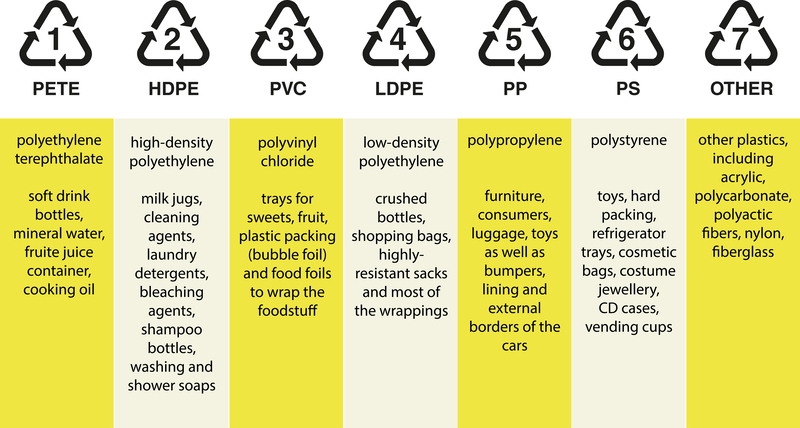Why Responsible PPE Waste Management Matters
In recent years, the use of Personal Protective Equipment (PPE) has skyrocketed, not only in medical and industrial settings, but also among the general public. This surge, primarily triggered by the global pandemic, has resulted in a massive increase in PPE waste worldwide. Unfortunately, improper disposal and management of PPE waste is leading to significant ecological, health, and societal impacts. This article explores why responsible PPE waste management matters and outlines best practices for ensuring the safe, sustainable handling of PPE materials.
Understanding PPE Waste: What Is It?
PPE waste generally encompasses items such as face masks, gloves, gowns, face shields, goggles, and shoe covers that are designed to protect wearers from infectious materials or hazardous substances. These items are often made from plastics, synthetic fibers, and other non-biodegradable materials to ensure durability and protective effectiveness.
- Disposable face masks (surgical, N95, etc.)
- Nitrile, latex, or vinyl gloves
- Plastic eye protection (shields or goggles)
- Non-woven medical gowns and aprons
The disposal of this waste has become a global environmental concern, especially as much of it ends up in landfills, waterways, and even oceans.

The Importance of Responsible PPE Waste Disposal
1. Protecting Environmental Health
When PPE is not managed responsibly, it can have a devastating effect on the environment. Single-use plastics prevalent in PPE items often take hundreds of years to decompose, contributing to mounting plastic pollution. Improperly discarded PPE can:
- Clog water drains, leading to urban flooding
- End up in rivers, lakes, and oceans, harming marine life
- Break down into microplastics that contaminate the food chain
*Animals can mistake floating PPE for food*, leading to ingestion and even death. Masks with earloops are especially dangerous as wildlife can get entangled in them, causing injuries or trapping.
2. Human Health Risks
Discarded PPE can be a vector for disease transmission. Contaminated items thrown carelessly may expose sanitation workers, waste pickers, and the general public to infectious diseases. This is particularly concerning in the case of viral outbreaks or pandemics.
- PPE can harbor pathogens if not properly treated
- Improper disposal in public areas increases community exposure risk
- Waste management workers face increased health hazards from handling used PPE
3. Overburdened Waste Management Systems
During major health crises, the volume of PPE waste can overwhelm existing municipal waste management systems. Most cities are not equipped to handle the sudden influx of medical and non-medical PPE waste, resulting in:
- Increased landfill usage
- Illegal dumping and burning of PPE
- Mainstream waste streams being contaminated with clinical waste
This leads to potential regulatory violations and heightens the risk to both environmental and human health.
Key Principles of Responsible PPE Waste Management
Adopting a responsible approach to PPE waste management requires a multifaceted strategy involving reduction, segregation, collection, treatment, and safe disposal.
Reduce and Reuse Where Possible
- Choose reusables: Where safe and practicable, use reusable masks or PPE items that can be safely disinfected.
- Minimize unnecessary use: Only use PPE when it is truly needed, helping to reduce waste generation at the source.
Segregation of PPE Waste
One of the most critical steps is proper separation of PPE waste from other waste streams:
- Medical/clinical PPE waste must be kept separate from household waste and handled as infectious/biomedical waste.
- Public disposable PPE waste (from masks/gloves used by non-infected individuals) should be collected in designated, clearly marked bins to avoid mixing with recyclables or compostables.
Proper Collection and Transportation
Responsible collection practices include:
- Using sealed, marked containers to avoid exposure
- Following established protocols for infectious waste handling
- Ensuring collection staff are trained and equipped with protection
Safe Treatment and Disposal
Treatment of PPE waste should prioritize methods that minimize environmental impact, such as:
- Incineration: High-temperature incineration effectively destroys pathogens but must be conducted in modern, regulated facilities to minimize emissions.
- Autoclaving: Sterilizes infectious waste using high-pressure steam.
- Landfilling: Only to be considered after safe disinfection and when other options are not feasible.
*Never burn PPE waste in open environments, as this releases toxic pollutants.*
The Regulatory Landscape and Global Guidelines
To ensure consistent and safe management, several international and local bodies have established guidelines for PPE waste disposal:
- World Health Organization (WHO): Publishes practices for healthcare waste management.
- US Centers for Disease Control and Prevention (CDC): Standards for PPE handling and disposal.
- European Environment Agency (EEA): Strategies for handling increased PPE waste in EU member states.
*Many countries have classified PPE used by infected persons or in clinical settings as hazardous waste* that requires specialized treatment.
Local Compliance and Best Practices
- Adhere to city or national PPE waste disposal regulations.
- Employ color-coded bins and clear signage for public drop-off points.
- Regular public education on the importance of proper disposal.
PPE Waste Management and Sustainability
Responsible PPE waste management is crucial not just for public health, but for sustainability. Environmental stewardship requires that we:
- Reduce mineral and fossil fuel extraction by lowering virgin plastic demand
- Promote innovative designs: biodegradable or recyclable PPE options
- Support extended producer responsibility (EPR) initiatives
The Role of Innovation
Many companies and researchers are exploring new materials and end-of-life solutions for PPE:
- Biodegradable masks or gloves made from natural fibers
- Mechanical recycling of uncontaminated PPE plastic
- Advanced waste-to-energy recovery for medical materials
These solutions can dramatically reduce the long-term waste footprint if adopted at scale.
The Social and Economic Impact of PPE Waste
Public Perception and Community Responsibility
Improperly discarded PPE can lead to negative public perceptions, lowering trust in institutions and even driving up instances of illegal dumping. Communities that *take responsibility* for their PPE waste foster a sense of collective stewardship, resulting in cleaner neighborhoods and stronger social bonds.
Cost Implications
The cost of cleaning up PPE litter, managing contaminated waste, and remedying environmental damage is significant. Proactive, responsible PPE waste management can save municipalities and organizations substantial resources over time.
How to Dispose of PPE Waste Responsibly
Whether you're an individual or part of an organization, responsible PPE disposal is crucial. Here's how you can make a difference:
- Always dispose of used PPE in sealed garbage bags or dedicated bins.
- Cut the earloops of masks before disposal to prevent wildlife entanglement.
- If at home, double-bag PPE waste if anyone in your household is sick.
- Never litter gloves or masks on streets or in public spaces.
- Follow guidelines for separating potentially infectious PPE from regular trash.
For Businesses and Organizations
- Train staff on correct PPE disposal protocols.
- Provide marked bins and signage throughout facilities.
- Engage with licensed waste collection services specializing in clinical/infectious waste.
- Regularly audit your waste management process for improvements.
Education and Advocacy
Raising awareness is a powerful tool in driving responsible PPE waste management. Public education campaigns--whether run by governments, non-profits, or local organizations--can inform citizens about environmental impacts and safe disposal options.
- Leverage social media and local news to spread the message.
- Encourage schools and businesses to adopt responsible PPE waste practices.
- Support policy initiatives aimed at reducing PPE waste and promoting recycling/reuse.

Conclusion: Everyone Has a Role to Play
Responsible PPE waste management matters more than ever in our interconnected world. Failing to act risks environmental degradation, public health crises, and economic costs. However, through *informed disposal*, *public education*, and *continued innovation*, we can mitigate these threats and build a more sustainable, resilient society.
Remember: Every mask, glove, or shield discarded responsibly is a step toward a cleaner, safer world. Your choices matter!
Frequently Asked Questions (FAQs) about PPE Waste Management
What counts as PPE waste?
Any used item designed to protect against infection or industrial hazards, including masks, gloves, gowns, face shields, and goggles.
Is PPE waste recyclable?
Most single-use PPE is not recyclable in standard facilities because it may be contaminated. However, specialized recycling programs for uncontaminated PPE plastics are emerging.
Does burning PPE waste harm the environment?
Open burning causes toxic emissions. Only high-temperature, regulated incinerators should be used, and even then, emissions must be tightly controlled.
How can we encourage responsible PPE waste management?
Advocacy, public education, clear guidelines, and supporting innovative disposal solutions all contribute to more sustainable PPE waste practices.
Together, we can ensure responsible PPE waste management for the benefit of our planet and future generations!
